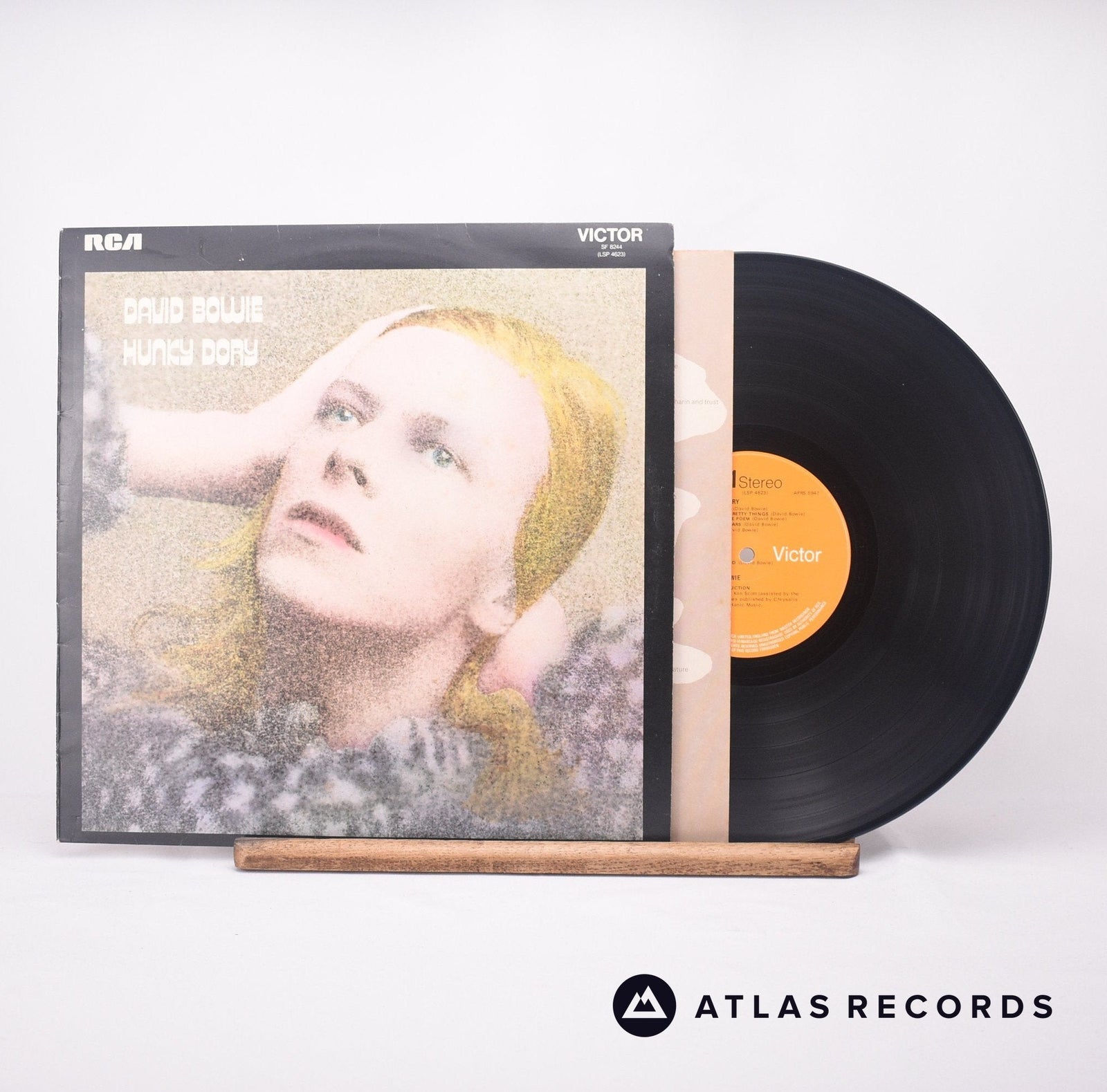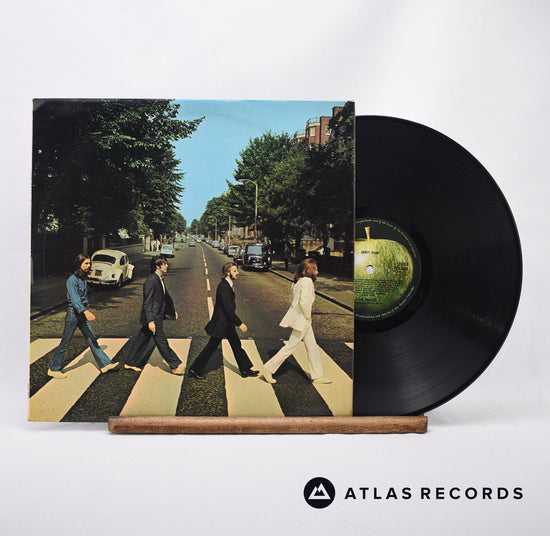There are a number of ways through which David Bowie records can be identified. A laminated sleeve will often indicate an early (if not first) UK press, and checking whether you have Mercury instead of RCA labels can also be a factor with certain albums that can determine exactly what you have in front of you.
In today's blog, we'll take a look at some of the finer details to look out for in order to properly identify your favourite David Bowie records.
1 - ‘Hunky Dory', 1971

Bowie's 1971 release of Hunky Dory can be an interesting record to identify, as there is only one real stand-out feature that sets this release apart from later issues - this being its laminated sleeve front.
All other releases of this record were issued with their sleeves sporting a matte finish on both sides - so if yours has its front side laminated, you could be sitting on a single-record gold mine, with recent auctions selling for upwards of £400!
All releases of this record were issued with RCA's iconic orange label, and many releases also shared similar matrix information, with '3T' being a common identifier in the dead wax space of each side of the record.
2 - ‘The Man Who Sold The World', 1970


The Man Who Sold The World was initially released in the USA in 1970 under the Mercury label, and then later in 1972 in the UK under RCA. This is the best way to identify whether or not you have a first press. Orange RCA labels will always indicate a later reissue, and the artwork will be completely different. Red 'Mercury' labels were also only used on one or two of early Bowie releases.
Bowie's other release that features this Mercury label is 'Space Oddity'. The album was released in the US in 1969, and even had a promotional run that featured white Mercury labels instead of red.

3 - ‘The Rise And Fall Of Ziggy Stardust And The Spiders From Mars', 1972
Early US releases of this album featured the iconic orange RCA label and also had a particularly interesting secondary feature - that they were pressed as 'Dynaflex' records.
Seeing the Dynaflex text towards the bottom of an orange RCA label is always a great indicator as to whether your Bowie record is an early press or not. As a general rule, most Bowie records from 1971 onwards will have initially pressed as a Dynaflex, and will have that distinct thin and wobbly quality as a result.
Some international reissues of this record would shake up the classic orange label format somewhat and feature either a green or black RCA printed label, accompanied by slight text and positioning variations when compared against the original.
Shop for David Bowie - Ziggy Stardust & The Spiders From Mars Records
4 - 'Aladdin Sane', 1973

Releasing in the UK in 1973, Bowie's iconic 'Aladdin Sane' went back to sporting the immediately recognisable orange RCA labels. First presses can also be pretty quickly identified due to the 'T3' matrix stamp on each side of the record's dead wax space.
Later reissues will often include the green RCA label that we mentioned earlier, along with some minor text placement differences.
5 - ‘Diamond Dogs', 1974
The first thing to look for with your copy of Diamond Dogs is the 'HH' price code that is visible on the sleeve's rear - about half way down. The other key identifier with this release comes in the matrix details. Be sure to look out for the 'KEV' etching in the B side's runout, this shows that your press was mastered by Kevin Metcalf and that it is a first UK pressing. Learn more about matrix etchings.
6 - ‘Low', 1977
Fortunately enough for those in the UK looking to identify this record, there was only ever one release of Bowie's 'Low' in 1977. Reissues of this album weren't widely released until 1980, and even then, they switched from orange RCA labels to green ones. So really, if you've got an orange RCA label copy of this album, it's likely a first UK press.
The other thing to look out for with original UK releases is the inclusion of a black and white insert that acted as an advertisement for the David Bowie Fan Club. This little pamphlet provided information on how to join the club, as well as exclusive products that could be purchased as a result of becoming a member.
When it comes to international markets, countries like the US did in fact get a 1977 release alongside the UK. An early US issue is easily identifiable by the iconic 'Nipper the dog' RCA icon on the record's label. Early US releases would also come with a similar fan club insert to that of the UK release.
7 - ‘Let's Dance', 1983
Bowie's 1983 release of 'Let's Dance' was only ever released once in the UK, so the only real thing to look out for here is whether or not your copy's label is black and white, or printed in full colour. If it is solely black and white, then you likely have a limited edition 1984 US reissue on your hands.
If your copy shows 'manufactured in the UK' in the rim text of the label, then you can be confident that it's an early UK press - as all UK releases of this album came out in 1983, and feature a full, multicoloured
A few reissues did make their way into the wider European market in the mid to late 1980s, however, these came with pretty distinct label variations when compared to the original UK release, and are pretty easily identifiable by the different languages used for the majority of text on their labels.













